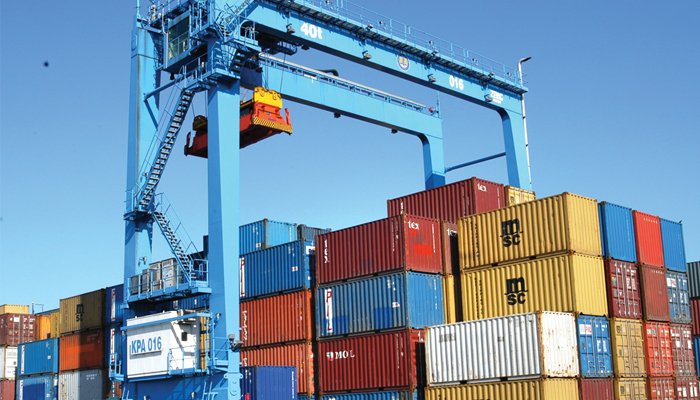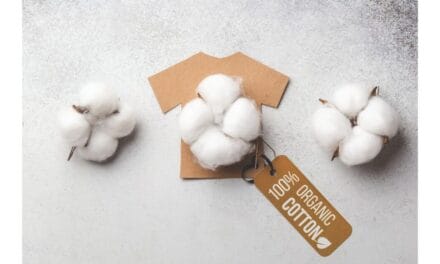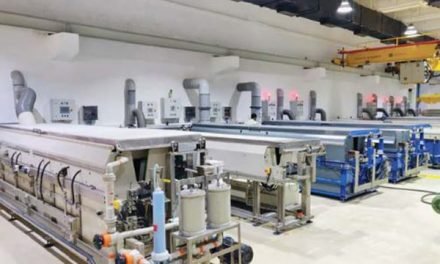Whether it is demonetisation or the Goods and Services Tax (GST), things have bogged down to the country’s exports, which are really in bad shape now. Both demonetisation and GST have adversely impacted our exports, including textiles and clothing (T and C). The global economic scenario has turned unfavourable. India has slipped to the 40th position in Global competitiveness, as per the report compiled by the World Economic Forum (WEF). It says that India however has garnered the highest ranking in South Asia.
The recent appreciation of the rupee against US dollar has dealt a severe blow to the T and C exports in the first 5 months of the current fiscal (2017-18). The problem has been accentuated as nearly 90 per cent of total exports are designated in dollar. Consequently, rupee earnings have come down, eating into the thin margins on exports. Come October, the situation is likely to worsen further, with only a portion of the customs duties of duty drawback being refunded to exporters. The remaining–excise and service tax – will be integrated into GST. Here again, the refund will constitute a very small amount, which will make T and C exports uncompetitive.
The T and C sector operates on thin margins even after factoring in the duty drawback refunds. Availability of the current liberal rates may be necessary in the future because five major petroleum products and electricity remain outside the GST regime for now. The five petroleum products which are critical inputs for the T and C sector are petroleum crude, high speed diesel, petrol, natural gas and aviation turbine fuel. The rates on these have been deferred by the GST Council. GST also has not been extended to alcoholic liquor for human consumption.
The demonetisation of Rs. 500 and Rs. 1,000 denominations had adversely affected the T and C sector as nearly 90 per cent of the units are in the micro, small and medium segments. A lot of cash problems had hit hard the units in Surat in Gujarat among others. The position has not changed for the better.
Another major issue confronting the industry is the inversion in the GST rates with the highest being on the man-made fibres (MMFs) and filaments and the lowest on fabrics. This could lead to credit accumulation, which, without sufficient avenues for cross-utilisation, could become a cost to the industry. In this regard, it may be noted that the 5 per cent GST would apply, subject no input tax credit (ITC) being available on credit accumulation.
CITI has also highlighted this issue saying that MMFs and blended yarns are major intermediate goods to produce value-added segments like blended fabrics and garments. The high tax on MMFs, inverted duty anomaly and nonrefund of accumulated ITC would disincentivize the industry to invest in this sector.
According to Tirupur Exporters Association (TEA), refund of duties against import of machinery under the Export Promotion Capital Goods (EPCG) scheme and import of accessories continue to worry exporters. There would be less refunds of duty drawback from October 1. The refunds would be down 4 to 5 per cent from 7.6 per cent earlier. This would be the customs portion of refunds. Rebate of State levies would be around 2 to 3 per cent. All this would render knitwear exports from the region uncompetitive, says TEA Executive Secretary S Sakthivel.
There would be problems regarding booking of orders in the future as buyers would be hesitant in making dollar payments at rates prevailing before the rupee appreciation. This could lead to serious rift between exporters and buyers, leading to cancellation of orders even, Sakthivel fears.
In the current global economic scenario, demand is declining. This will have greater implications on the T and C industry. Therefore the government must revisit the amendments it had made to the Foreign Trade Policy (2015-20) and align them in the wake of GST. Any departure in FTP from the previous regime under GST will have far-reaching ramifications on the industry’s export performance. Export competitiveness will come under pressure. China’s excess capacity in textile segments such as MMFs, yarns and garments will lead to higher imports into India.

India’s cotton economy witnessed sluggishness during 2015-16. This affected textile mills badly, with most of them incurring huge losses. During the same period, the price of cotton kept fluctuating in the domestic market. Cotton consumption for both SSI and non-SSI mills indicated different scenarios. In the case of non-SSI mills, the pace of consumption slowed down and came to the lowest level for the last five years, though in quantitative terms, consumption increased marginally (0.2 per cent) in 2015-16. On the other hand, consumption in SSI mills went up by 5 per cent, a significant growth compared to large mills. Non-SSI mills consumed around 4664 mn kg of cotton while SSI mills consumed around 460 mn kg of cotton during the period under review. High consumption demand by mills led to an increase in imports during recent times, though imports in 2015-16 were lower than those in the preceding year.
MChina continued to be the largest supplier of textiles to India in 2015-16. China’s exports were worth $2517 mn with a share of 43 per cent in India’s total T and C imports. China’s major textile export items are of other textile yarns, fabrics, made-ups and articles thereof. China was also the top supplier in almost all T and C products to India. This is the only country as a textile partner to India where India imports more textile products than its exports of textile products. Bangladesh is another country from which India’s imports of T and C are increasing. This is largely due to garments which are imported in large quantities because of the dutyfree status accorded to Bangladesh by India under the SAFTA agreement. India’s textile products imports were to the tune of $5343 mn in 2015-16.

























